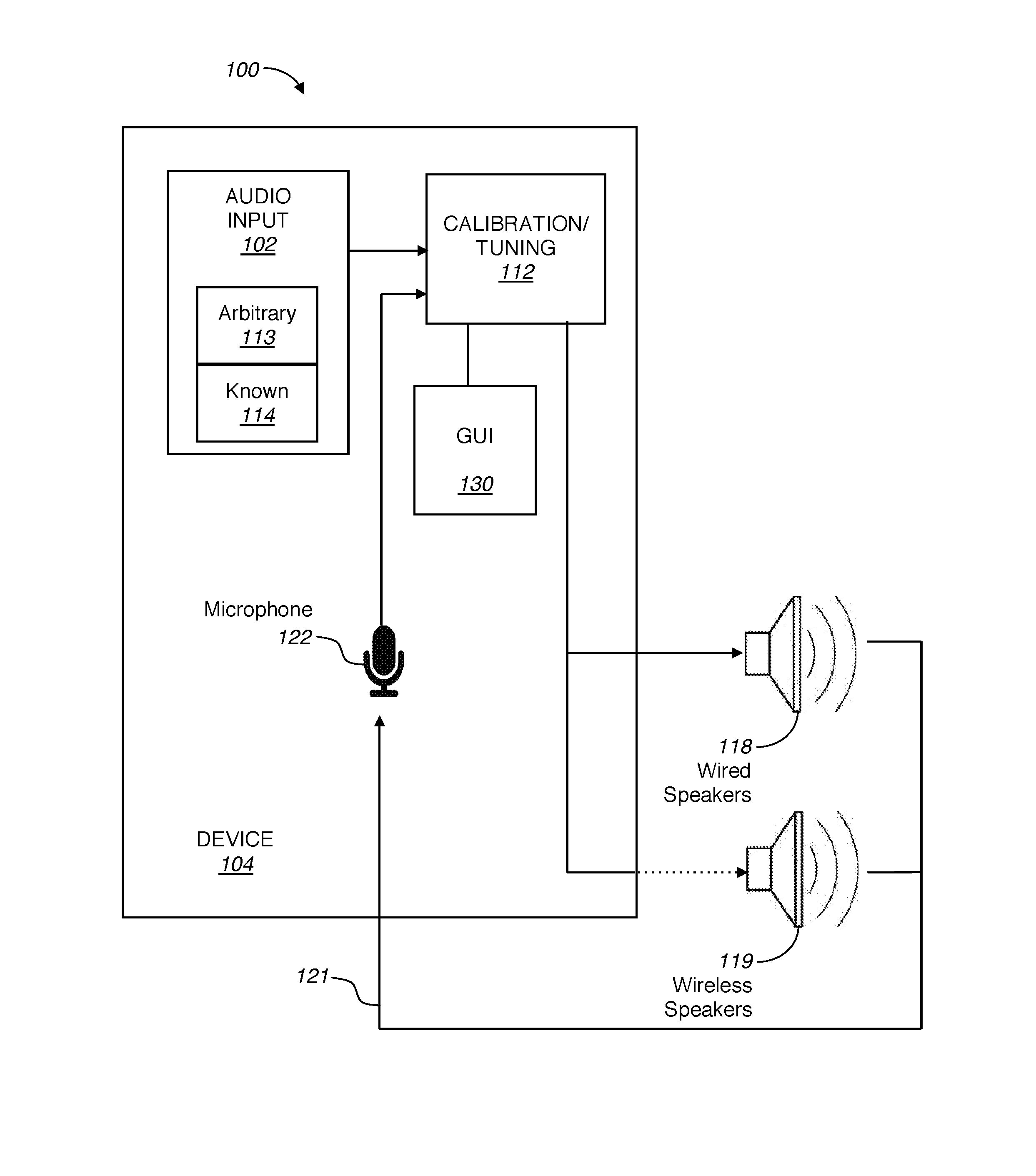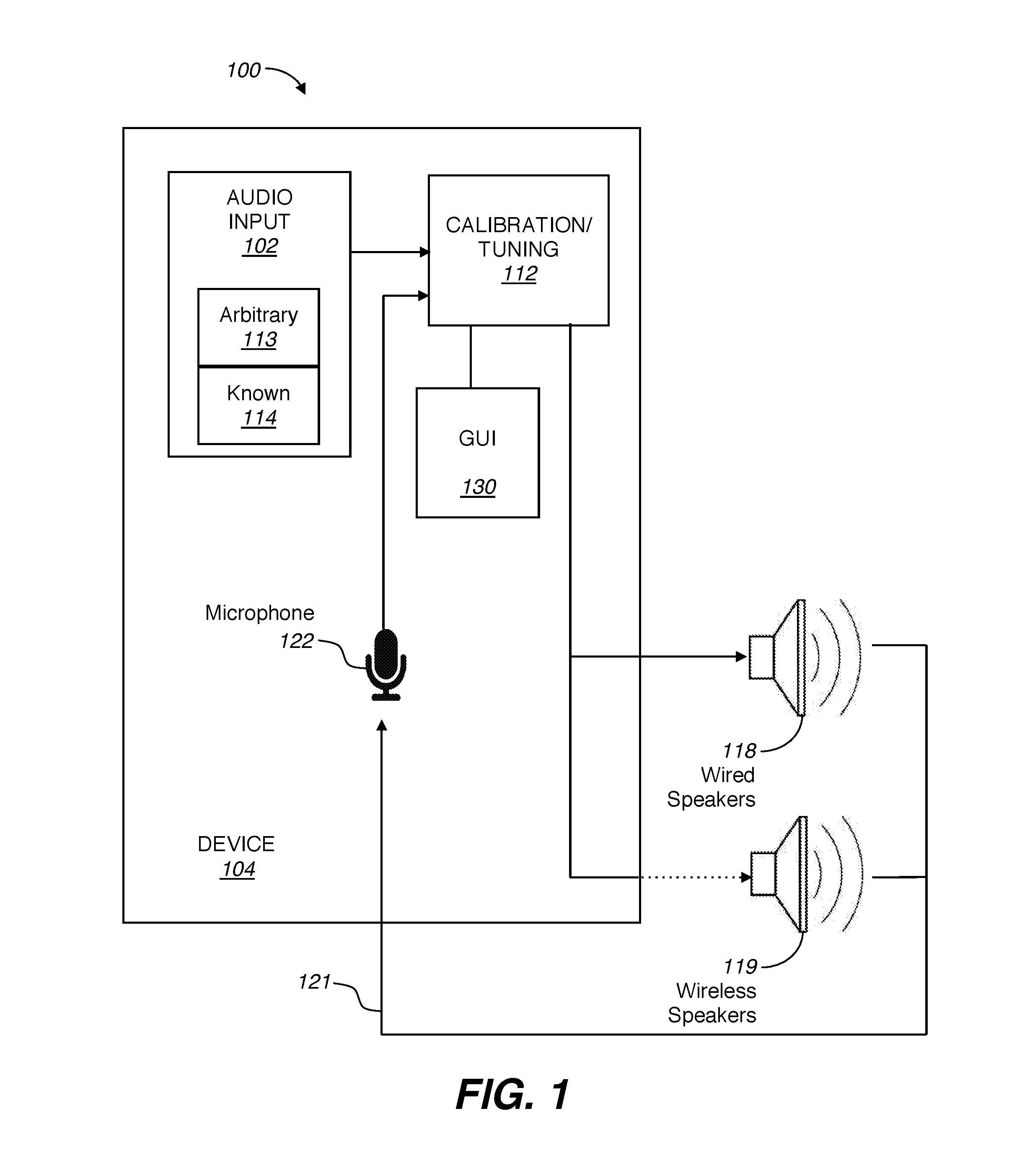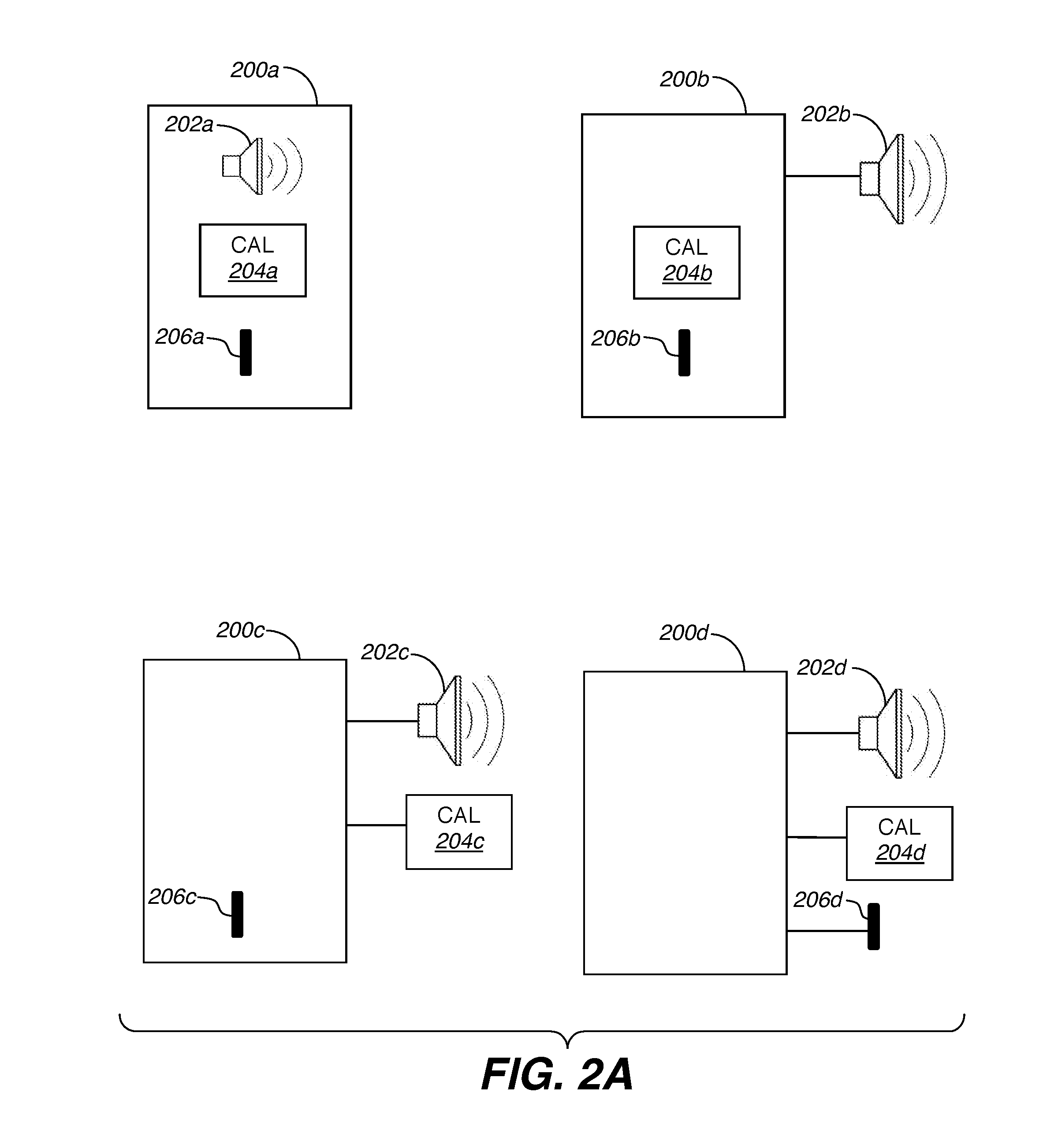System and Method to Enhance Speakers Connected to Devices with Microphones
- Summary
- Abstract
- Description
- Claims
- Application Information
AI Technical Summary
Benefits of technology
Problems solved by technology
Method used
Image
Examples
Embodiment Construction
[0007]Embodiments are described for calibrating a speaker connected to a device having a microphone by inputting an original audio signal to a processing component and an output stage of the device for playback through the speakers, receiving playback sound output from the speakers through the microphone to generate a microphone signal, and inputting the microphone signal into the processing component to calibrate the speakers for optimal playback of the original audio signal, wherein the processing component is configured to compare the original audio signal to the microphone signal and correct the microphone signal by one or more audio processing functions in accordance with a refresh schedule. In the case of an initially unknown or inaccessible test signal or sound file, the system may perform automated content recognition or metadata processing or both to convert the arbitrary sound file to the sound file known to the device. The sound file may be a streaming content, sourced co...
PUM
 Login to View More
Login to View More Abstract
Description
Claims
Application Information
 Login to View More
Login to View More - R&D
- Intellectual Property
- Life Sciences
- Materials
- Tech Scout
- Unparalleled Data Quality
- Higher Quality Content
- 60% Fewer Hallucinations
Browse by: Latest US Patents, China's latest patents, Technical Efficacy Thesaurus, Application Domain, Technology Topic, Popular Technical Reports.
© 2025 PatSnap. All rights reserved.Legal|Privacy policy|Modern Slavery Act Transparency Statement|Sitemap|About US| Contact US: help@patsnap.com



